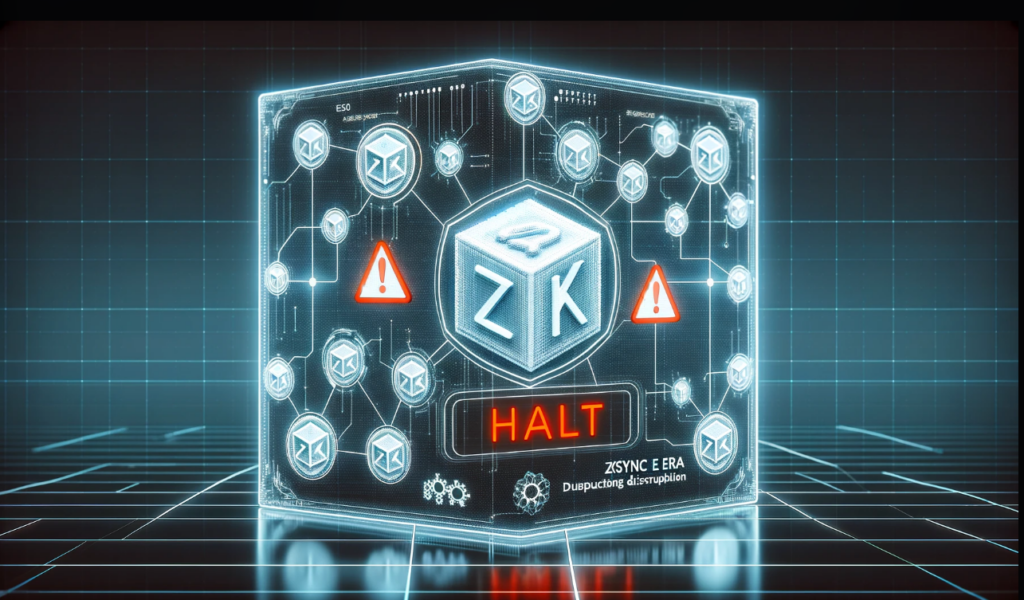The Incident Unfolds: Understanding the zkSync Era Disruption
On December 25, 2023, the blockchain community was alerted to a significant disruption within the zkSync Era network. Developers took to X (formerly Twitter) to announce that the network was encountering issues, halting block production temporarily. This incident was triggered at 05:50 UTC by a software bug that activated one of the network’s automated safety protocols. The problem required immediate attention and was resolved swiftly, with the network returning to full operational status shortly after.
The zkSync Era, known for its robust security measures and innovative technology, faced a rare moment of vulnerability. Just over a week prior to this incident, the network experienced a similar halt in transactions due to network congestion, with block production suspended for over an hour. This recent event marks another critical moment for the blockchain, which utilizes zk-rollups technology for off-chain transaction computations, aiming to enhance scalability and efficiency.
Delving into the Technical and Security Aspects
The zkSync Era is not just another blockchain; it’s a testament to the evolving landscape of cryptocurrency networks, prioritizing security and efficiency. At its core, the protocol employs mechanisms like practical Byzantine fault tolerance (pBFT) and delegated Proof-of-Stake (DPoS) to safeguard against vulnerabilities. Despite these measures, a recent report by ChainLight highlighted a potential exploit that could lead to substantial losses. However, the inherent design of zk-rollups significantly reduces the likelihood of such an exploit being successful.
This incident also sheds light on the broader context of blockchain reliability and security. Similar protocols, such as Arbitrum, have faced their own challenges, indicating a common hurdle in the quest for seamless and secure block production. As these networks grow and handle increasing volumes of transactions, the demand for robust, fault-tolerant systems becomes more apparent.
A Perspective on Resilience and Innovation
From my point of view, the recent zkSync Era incident is a double-edged sword. On one hand, it highlights the vulnerabilities inherent in even the most advanced blockchain networks. The activation of an automated safety protocol due to a software bug is a stark reminder of the complexities and potential weaknesses that developers must continually address. On the other hand, the swift resolution and transparency demonstrated by the zkSync team are commendable. They not only addressed the issue promptly but also ensured the community was informed every step of the way.
The incident also brings to light the importance of continuous innovation and vigilance in the blockchain space. As networks like zkSync Era push the boundaries with technologies like zk-rollups, they also venture into uncharted territories where unexpected challenges may arise. The proactive stance on security, as evidenced by the network’s quick recovery and the implementation of advanced protocols, is crucial in maintaining trust and functionality.
In conclusion, while the halt in block production was a momentary setback for zkSync Era, it also serves as a valuable learning opportunity for the blockchain community. It underscores the need for ongoing diligence and innovation in network security and resilience. As the network moves forward, the incident will likely become a footnote in its broader journey towards establishing a secure, efficient, and scalable blockchain ecosystem.





